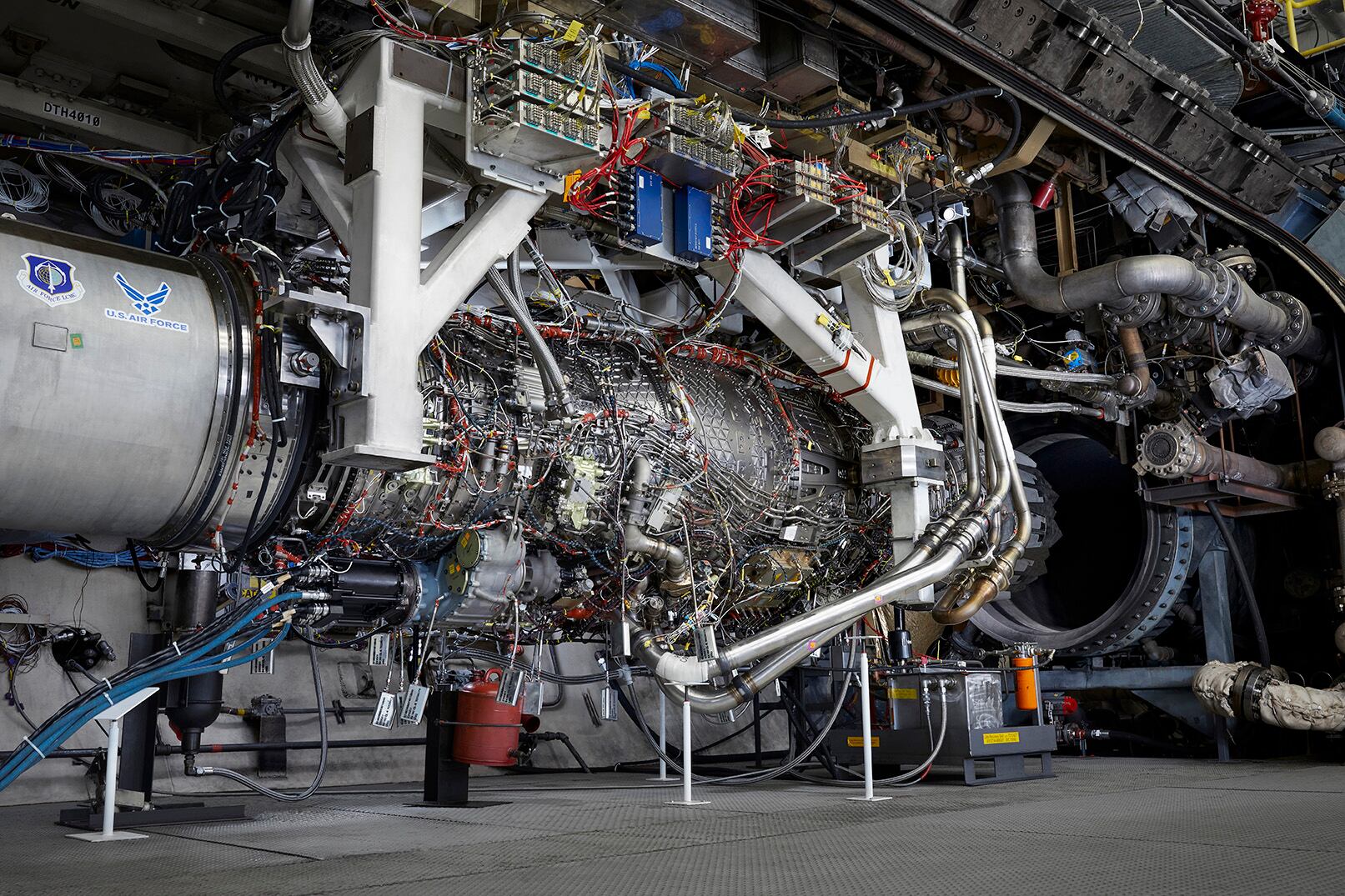DAYTON, Ohio — The future of the U.S. military’s Adaptive Engine Transition Program is still up in the air, but one service is trying to fold the effort’s technological innovations into an advanced jet’s propulsion system.
In a Tuesday roundtable with reporters in Dayton, Ohio, John Sneden, director of the Air Force’s propulsion directorate, outlined ways his organization is working to adapt AETP features into the future Next Generation Air Dominance platform’s engines.
That propulsion system, dubbed Next Generation Adaptive Propulsion, or NGAP, is in a preliminary design phase, Sneden said at the Air Force’s Life Cycle Industry Days event. Within the next few years, he added, NGAP should be ready to move into prototyping and testing, having learned multiple lessons from the previous work on AETP.
The Pentagon has researched adaptive engine technology through AETP since 2016 as a possible replacement for the F-35 Joint Strike Fighter’s current engine. GE Aerospace as well as Pratt & Whitney — the latter makes the F-35′s current F135 engine — developed their own adaptive engines and are continuing to work on NGAP.
In its March budget request, the Pentagon announced it had instead decided to stick with the F135 engines and upgrade them to provide more power and cooling for the F-35. The Pentagon’s proposed budget requested no money for the alternative AETP option.
But some lawmakers have since moved to restore funding for AETP so the military can continue developing this technology for use in advanced fighter systems.
NGAP is fully funded in the Air Force’s proposed fiscal 2024 budget, with the department requesting $595 million — an increase of $375 million over fiscal 2023.
If AETP is not funded in FY24, Sneden said, the Air Force will shift its remaining AETP budget and activities to NGAP. Those include ongoing work developing controls for AETP’s adaptive fan, cooling technologies and advanced materials, many of which will form crucial elements of NGAD’s eventual engine.
Sneden said AETP’s adaptive element — allowing the engine to rapidly shift to the configuration that would provide the best thrust and efficiency for a certain situation — and the use of advanced composite materials, which can withstand much higher temperatures, for turbines and other components will be central to NGAP.
But it’s still undecided as to whether the NGAD’s engine will use the third stream of air that is another part of the AETP design, he said.
While the technology used in both AETP and NGAP will be largely the same, Sneden explained, the future NGAD’s engines will be sized differently from those of the F-35. That means elements of AETP would have to be resized and redesigned to be suitable for NGAD.
“We’ll be able to port that tech over,” Sneden said. “It’s not a one-for-one; you can’t just pull it off of the F-35 and move it directly over to NGAD in its current state.”
While GE Aerospace and Pratt & Whitney develop the new fighter’s engines, Sneden noted, the potential designers of the NGAD airframe are also working closely with them to ensure the engines will fit.
The Air Force last year also awarded contracts worth nearly $1 billion each to aircraft manufacturers Boeing, Lockheed Martin and Northrop Grumman to work on prototyping NGAD engines, although Northrop in July confirmed it would not bid as a prime contractor on NGAD. The Air Force issued a solicitation for NGAD in May, and it plans to make an award in 2024.
“We are making one design that will … fit into any of the [airframe] designs” for NGAD, Sneden said. “Later on, as we downselect and figure out who the final vendor is, there could be some optimization of that system and that particular design. But they’re all designing and moving around the propulsion constraints that we’ve studied and evaluated and provided to each.”
AETP testing that already occurred has been tremendously useful for NGAP, Sneden said.
“Because of the data that we’ve received off of that, we actually understand how the adaptive engine technology works,” Sneden explained. “We understand the types of changes that we need to make, and we can incorporate that into the baseline for NGAD.”
It will be crucial for the United States to redouble its efforts toward developing new and innovative propulsion systems, Sneden noted. Since about 2015, China has made considerable advancements of its own on propulsion, and is starting to catch up.
“We are losing our propulsion lead to China, which is investing heavily and developing and producing effective propulsion technologies,” Sneden said. “We have to maintain that propulsion edge.”
Stephen Losey is the air warfare reporter for Defense News. He previously covered leadership and personnel issues at Air Force Times, and the Pentagon, special operations and air warfare at Military.com. He has traveled to the Middle East to cover U.S. Air Force operations.




